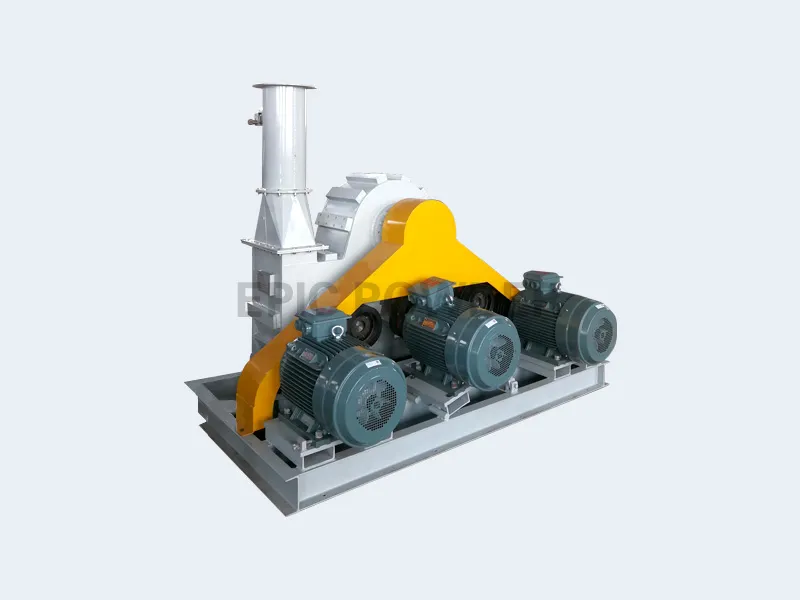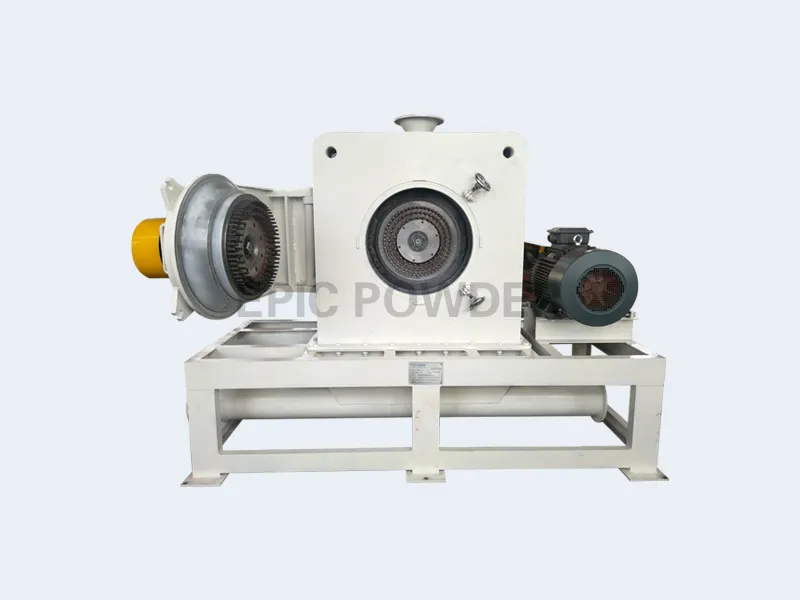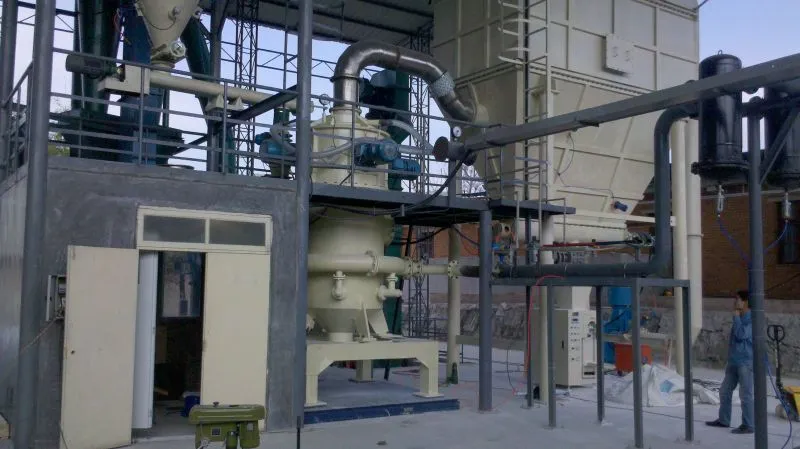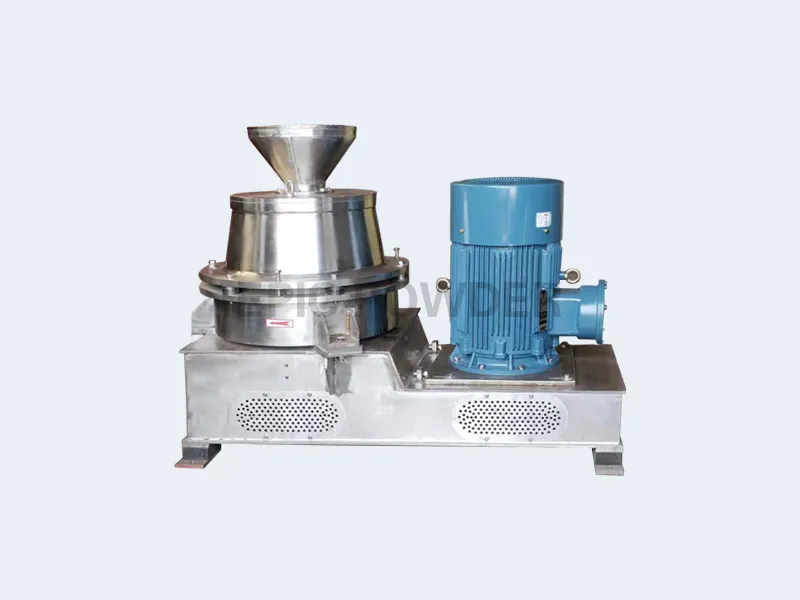The process and equipment are key. They help improve powder surface properties to fit application needs. Many types of powder surface modification equipment exist. They include dry and wet equipment. You need to understand the structure, principle, and scope of the equipment. This is the basis for choosing the right surface modification equipment.
Common surface modification equipment
EPIC Powder Machinery CRM continuous activation and modification machine
The EPIC Powder Machinery CRM machine can modify powder surfaces. It works on powders with finenesses from 325 mesh to 6000 mesh. It can modify light and heavy calcium carbonate, water-washed kaolin, coal-based calcined kaolin, talc, quartz powder, mica, aluminum hydroxide, magnesium hydroxide, and brucite. It also works on ultrafine and precipitated barium sulfate, lithopone, white carbon black, and titanium dioxide. It works on fly ash, sericite, zinc oxide, and other materials. The machine can also break apart and spread out materials.

This unit completes the surface activation and modification treatment of powder materials. The dosing system measures the dry powder and modifier precisely. It sends them to the host through the screw conveyor. If a solid modifier is used, the modifier will first be heated and melted into a liquid state in the temperature-controlled dosing system.
The whole system creates no dust pollution. It’s easy to operate. It uses little modifier and energy per unit product. It needs no extra powder heating device. You can adjust the modification temperature as needed, up to 120~140°C. The product doesn’t clump up. It strongly disperses and breaks down ultra-fine powders. It is great for modifying fine powders. It can modify one or more powders with one or more modifiers. The composite changes to the whole body can also form a production line. It can have a dry mill and wet dryer. This lets it do the process of grinding and changing materials all together.
EPIC Powder Machinery PM-C pin mill modification machine
The pin disc mill modification machine is a common tool. It is used to prepare ultrafine powder. It is mainly used to crush and modify hard materials. The main components of the equipment include a rotating needle disc and a stationary needle seat. The high-speed needle disc and the stationary needle seat rub together. This rubbing achieves ultra-fine crushing and surface modification of materials.

High speed heating mixer
It is mainly composed of a rotary cover, a mixing pot, a baffle, a stirring device, a discharging device, a driving motor, a machine base, etc.

Scope of application: It is an intermittent batch powder surface modification equipment. The processing time can be long or short. It is good for modifying the surface chemistry of medium and small batches of powder. It is also good for testing modifier formulas in the lab.
High-speed airflow impact surface modification machine
The machine’s main structure has a fast-rotating rotor and stator. It also has a circulation loop, fins, jacket, and feeding and discharging devices. The system has a mixer, meter, and high-speed airflow impact machine. It also has a product collector and control device.
This system has many uses. It can coat, encase, and modify powders. It can also shape and mix “micron/micron” and “nano/micron” powders. The materials can be inorganic, organic, or metal. They have many uses and can be quickly dry processed.

Horizontal paddle mixer
The mixer is an intermittent powder surface modification machine. It has a horizontal cylinder and a single-shaft, multi-paddle structure. It is mainly composed of a transmission mechanism, a spindle, a cylinder, an end cover, etc.
This machine is for modifying the surface of light and heavy calcium carbonate. It is divided into two models: A and B. The heating medium of type A is thermal oil, and the heating medium of type B is water vapor.
Turbo Mill Modifier
It is mainly composed of machine base, driving part, crushing chamber, gap adjustment and inlet and outlet. The heat (50℃~60℃) from the ultrafine grinding process introduces the crushed ultrafine powder into the vortex mill. At the same time, it meters in preheated and melted stearic acid for continuous surface modification. deal with.
This mill is used with heaters and drug delivery equipment. It can form a powder surface modification system. Currently, this system is mainly used for surface modification with the ultra-fine heavy calcium carbonate production line. It is rarely used alone for powders. surface modification.
Wet surface modification equipment
At present, wet surface modification equipment mainly uses temperature-controlled stirring reactors or reaction tanks. The cylinder of this equipment is generally made of an inner and outer layer with a jacket. The heating medium, such as steam, thermal oil, etc., passes through the jacket. Some simpler surface modification tanks can also be electrically heated.
These kettles are used for modifying chemical coatings. They are used for modifying powder surfaces. They generally have no pressure requirements. They just need to meet temperature and slurry dispersion needs. They also need to resist acid and alkali. Therefore, the structure is relatively simple.
Selection principles of surface modification equipment
(1) Good dispersion of powders and surface modifiers. Good dispersion is the only way for the powder and surface modifier to have equal opportunities and effects. It also allows for less surface modifier to be used.
(2) The modification temperature and residence time are adjustable within a certain range.
(3) Low energy consumption and small wear per unit product. In addition to modifiers, the main cost of surface modification is energy consumption. Equipment with low energy use can cut costs and boost product competitiveness. Low wear can avoid contaminating materials and improve equipment operation. efficiency and reduce operating costs.
(4) Less dust pollution. Dust escapes during the modification process. It pollutes the production environment and causes loss of materials. This raises product production costs. Therefore, the dust pollution of the equipment must be investigated.
(5) Continuous production, easy operation and low labor intensity.
(6) Smooth and reliable operation.
The control level is high. It can adjust factors such as capacity, modifier amount, temperature, and time. It does so according to the material and modifier properties.
(8) The production capacity of the equipment must be compatible with the designed production scale. When designing and increasing production, use large equipment and reduce the number of machines. This cuts floor space and costs and makes management easier.

